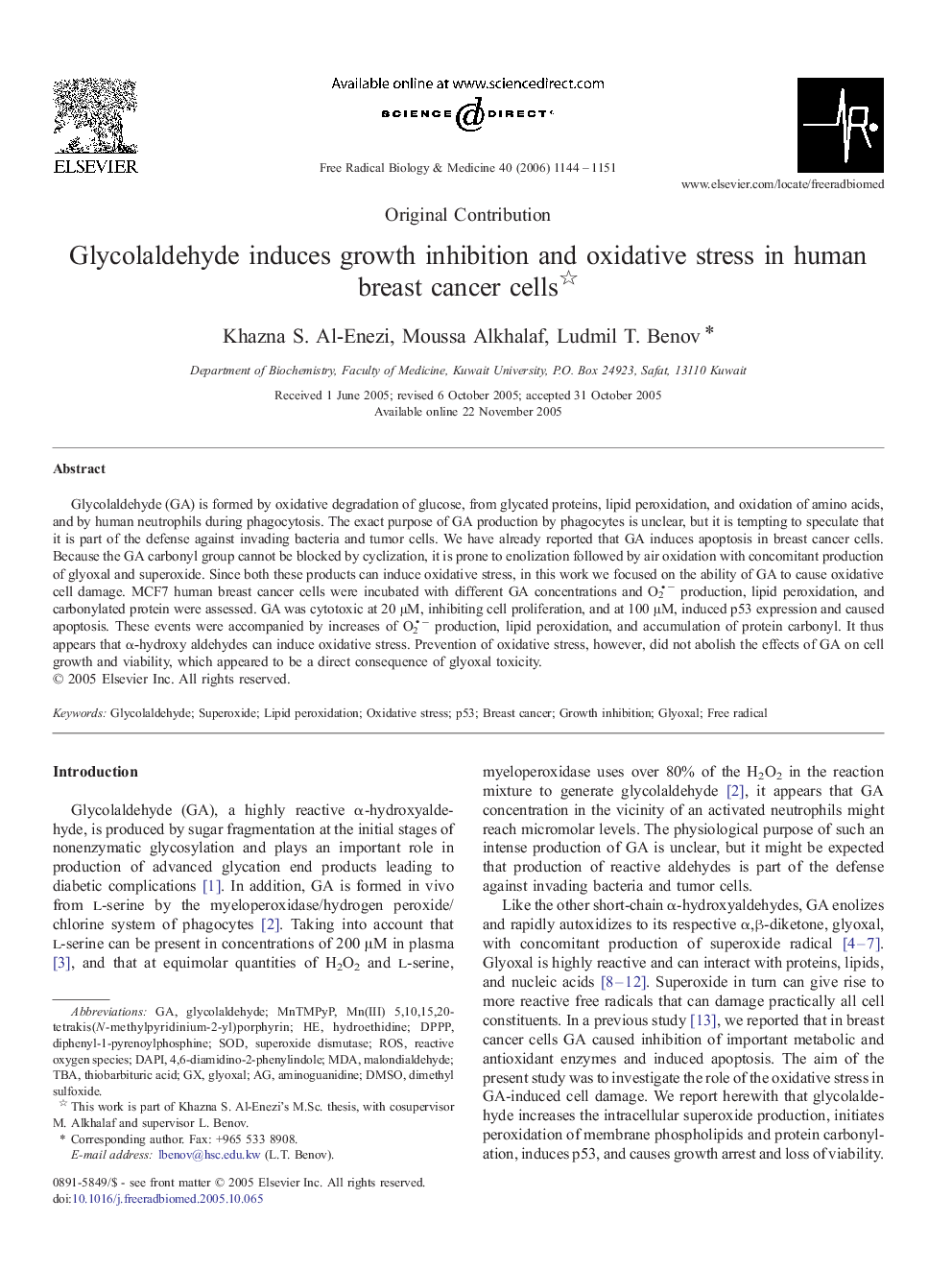| کد مقاله | کد نشریه | سال انتشار | مقاله انگلیسی | نسخه تمام متن |
|---|---|---|---|---|
| 1911962 | 1046852 | 2006 | 8 صفحه PDF | دانلود رایگان |

Glycolaldehyde (GA) is formed by oxidative degradation of glucose, from glycated proteins, lipid peroxidation, and oxidation of amino acids, and by human neutrophils during phagocytosis. The exact purpose of GA production by phagocytes is unclear, but it is tempting to speculate that it is part of the defense against invading bacteria and tumor cells. We have already reported that GA induces apoptosis in breast cancer cells. Because the GA carbonyl group cannot be blocked by cyclization, it is prone to enolization followed by air oxidation with concomitant production of glyoxal and superoxide. Since both these products can induce oxidative stress, in this work we focused on the ability of GA to cause oxidative cell damage. MCF7 human breast cancer cells were incubated with different GA concentrations and O2− production, lipid peroxidation, and carbonylated protein were assessed. GA was cytotoxic at 20 μM, inhibiting cell proliferation, and at 100 μM, induced p53 expression and caused apoptosis. These events were accompanied by increases of O2− production, lipid peroxidation, and accumulation of protein carbonyl. It thus appears that α-hydroxy aldehydes can induce oxidative stress. Prevention of oxidative stress, however, did not abolish the effects of GA on cell growth and viability, which appeared to be a direct consequence of glyoxal toxicity.
Journal: Free Radical Biology and Medicine - Volume 40, Issue 7, 1 April 2006, Pages 1144–1151